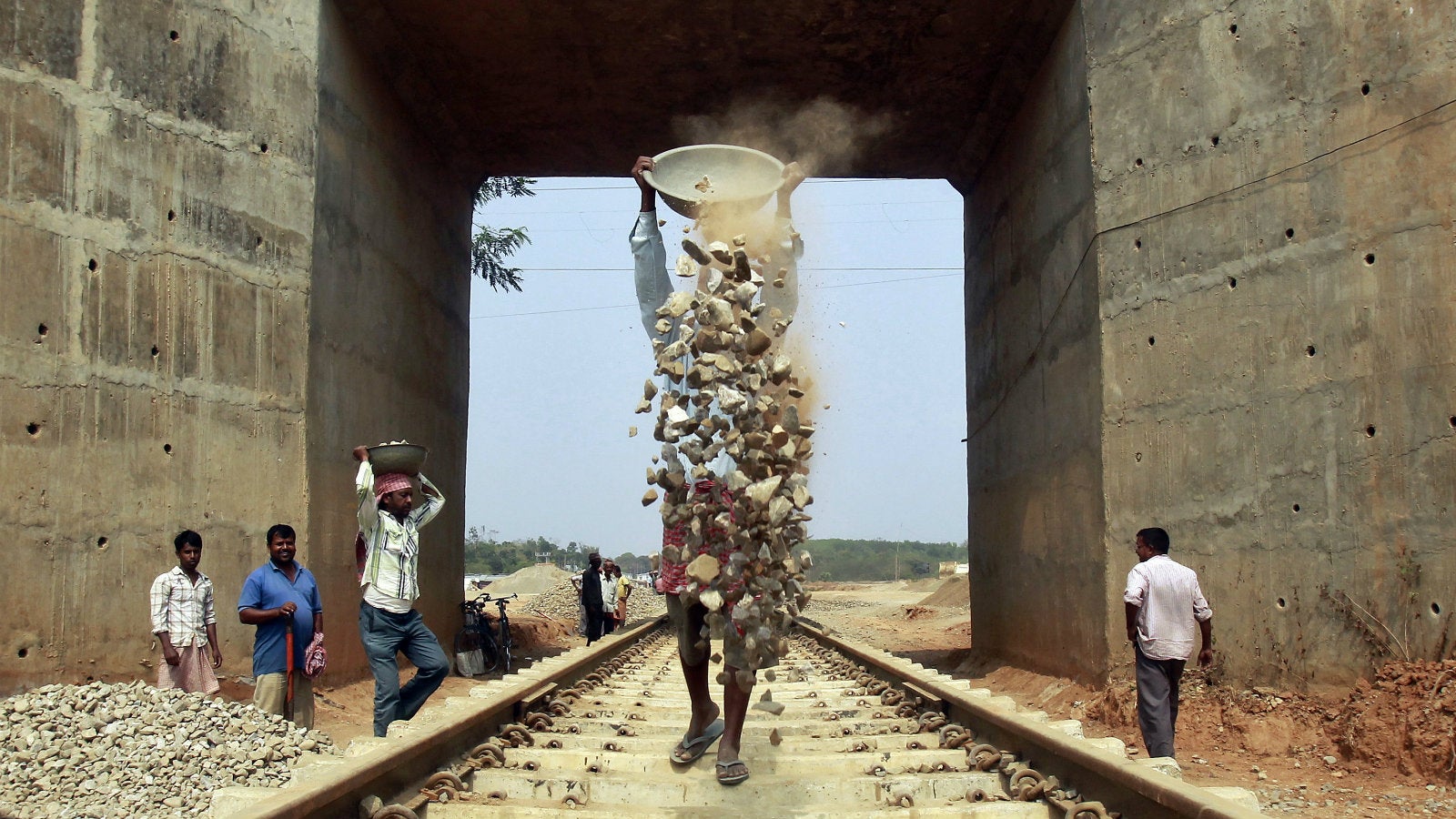The most expensive delay for Indian Railways: unfinished projects worth $65 billion
Indian Railways, one of the world’s largest rail networks, is hobbling along on a slow and painful ride.


Indian Railways, one of the world’s largest rail networks, is hobbling along on a slow and painful ride.
Some $65 billion (Rs4.34 lakh crore) worth of the transporter’s projects are currently pending, according to an Oct. 07 research report by Phillip Capital, a brokerage. Most of these delays are in areas that require some kind of construction or infrastructure development. For instance, 83% of the delayed projects involve laying new lines, doubling the existing ones, and gauge conversion, the report said.
Here’s a break-up:
“Land acquisition (a state subject), which accounts for 50% of the cost of a new line, is the main bottleneck,” the report said. “…The cost of land acquisition has increased multi‐fold after the new Land Acquisition Act, leading to cost escalation, thus, making projects unviable.”
The situation doesn’t bode well for the Narendra Modi government’s ambitious plans to modernise the Indian Railways. Fixing India’s gargantuan railway system, with a network spanning some 65,000 kilometres, was a key point in the 2014 general election manifesto of Modi’s Bharatiya Janata Party. Two years on, the progress evidently has been slow.
In a 2015 white paper (pdf), the Indian Railways minced no words in outlining the scale of the problem. “The biggest challenge facing Indian Railways today is its inability to meet the demands of its customers, both freight and passenger. Apart from the quantum of investment, quality of delivery is also an issue,” the document explained. “Indian Railways has suffered from chronic and significant under-investment as a result of which the network expansion and modernisation have not happened at the requisite pace leading to an erosion of the share in national freight and passenger traffic. “
Although the government has made some big moves since, including launching the country’s fastest train, the Gatimaan Express, and pushing the controversial bullet train project, the railway’s infrastructure backbone still badly needs strengthening. Alongside, the railways have also tried to improve the quality of services provided to the 23 million passengers who use its network every day but much is left to be desired.
Dismal railway finances
A major hurdle is the Indian Railways’s financial math which is messy. For instance, its revenue for the 2016-17 fiscal year is estimated at Rs1.89 lakh crore (pdf) and expenses at Rs1.71 lakh crore. A huge part of these expenses are related to employees (it is the world’s seventh-largest employer with over 1.4 million workers), which weighs down its profits. That cripples the railways’ ability to take up large and expensive infrastructure projects.
Moreover, the project delays are increasing the costs. This, in turn, is pulling down the returns generated from these projects, resulting in huge cash outflows. In January 2015, railway minister Suresh Prabhu himself admitted that the transporter is in “deep trouble” when it comes to investments. Besides, revenue from freight, its largest source of income, is dwindling.
Decades of mismanagement have also left Indian Railways with a paltry war chest. While presenting the railway budget in February this year, Prabhu laid out an ambitious plan with a capital expenditure of Rs1.21 lakh crore. These plans would mostly be funded through borrowings from institutions such as the state-run Life Insurance Corporation (LIC), because Indian Railways’ savings stand at a mere Rs10,000 crore.
If it wants to execute the pending projects and other network congestion plans by fiscal 2020, Indian Railways would need $53 billion (Rs3.53 lakh crore), Phillip Capital estimates. It added that 38% of these funds will have to be loaned, 30% will come from budgetary support, 20% from internal sources, and the rest from the Indian Railway Finance Corporation.
This means more debt, leading to increased costs. And the merry-go-round continues.